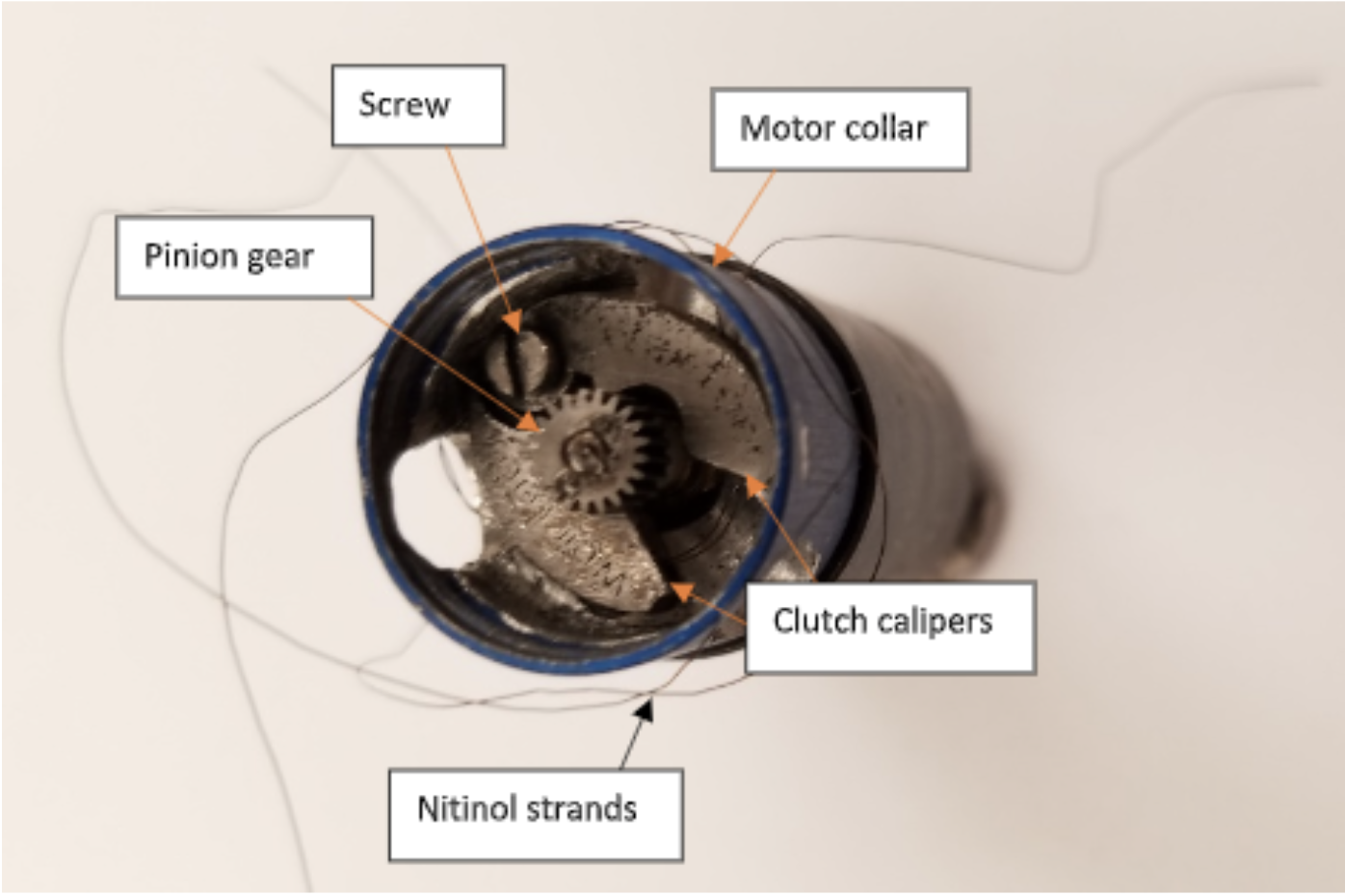Sai Mannam
Image from Andrew Chan, Jacob Altholz, Matthew Davidson, and Richard Weir (Chan et al., 2020).
Prosthetic devices have been a part of human innovation for centuries. From the crudest prosthetic hands originating from ancient Egypt to the most advanced limbs designed in the 21st century. With continuing development and refinement in prosthetics research, prosthetic devices become more suitable options for people with disabilities. With greater functionality, though, come greater challenges with size, weight, and complexity. Researchers Andrew Chan, Jacob Altholz, Richard Weir, and Matthew Davidson from the University of Colorado Denver invented a novel clutch mechanism that resolves some of the problems inherent in recent prosthetic developments, which they detail in their new paper.
Human hands lift objects in two steps. First, the reach phase where the hand moves toward the object, and second the grasp phase where the hand gets a hold on the object. This process involves inversely related torque and speed. Lifting objects requires high speed and low torque. Grasping, however, needs torque but little speed. The motors used in many prosthetic fingers are insufficient for both. As motors are added to satisfy these dual requirements, weight and cost of motors are major frictions for building prosthetic hands. This speed/torque problem is what the researchers at the University of Colorado overcame.
Their solution was a novel motor clutch that provides a wider torque and speed range. In the past, there have been clutches that served a similar purpose, but they were quite complicated, heavy, expensive, and prevented any user-controlled activation. This novel clutch utilizes nitinol memory wire, a nickel and titanium alloy. Incorporating this clutch not only improves user directed hand activity, but also solves the problem of back-drivability, allowing the prosthetics to better absorb external force.
In their paper, the University of Colorado researchers detail how they tested the clutch’s ability to resist torque at different amounts of wire. During testing, they introduced forces a regular prosthetic would experience during use as well as calculated the torque at failure to determine the overall strengths of the different experimental groups. They found that increasing the number of strands of nitinol was associated with increased torque resistance. Though this was a major step in the right direction, the scientists discuss a few limiting factors, noting that more wire “increased the current draw [and] the time it took for the wires to cool enough to relax the clutch system.”
The nitinol clutch system invented by these scientists provides a major fix, allowing for more functional prosthetic devices. Harboring improved movement functionality and torque resistance characteristics, the nitinol system is an upgrade from current prosthetic devices available on the market, especially considering its possibly lower cost. Though there are drawbacks to increasing the number of strands on the motor system, the researchers provide areas for future study, including improving the motor shaft coating and nitinol wire thickness. In time, and with additional development and manufacturing capacity nitinol clutches may become commonplace in capable, inexpensive prosthetic devices.


